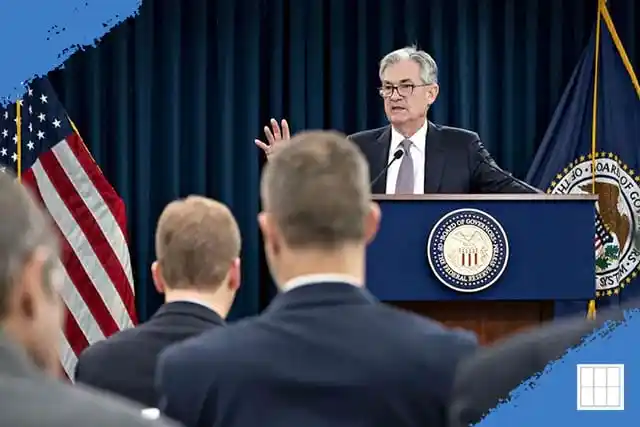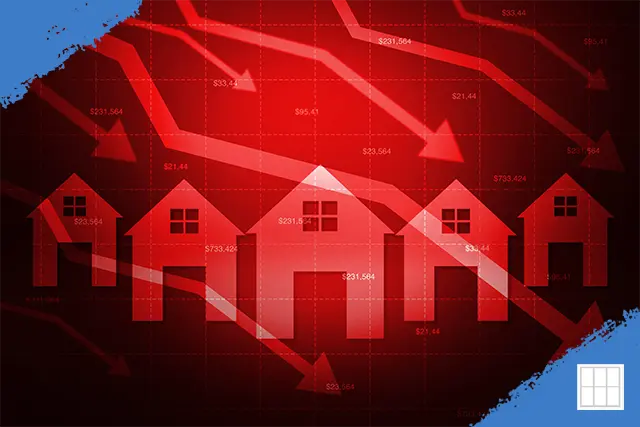Welcome to Olathe, Kansas, a vibrant city known for its family-friendly atmosphere and growing economic…

Federal Reserve’s Rate Decision on May 7, 2025, and Its Impact on Kansas City Mortgage Rates
On May 7, 2025, the Federal Reserve’s Federal Open Market Committee (FOMC) announced its decision to maintain the federal funds rate at a range of 4.25% to 4.5%, marking the third consecutive meeting with no change following rate cuts in late 2024. This decision, widely anticipated by markets, reflects the Fed’s cautious approach amid economic uncertainties, particularly related to inflation and the potential effects of the Trump administration’s tariff policies. For Kansas City residents and prospective homebuyers, this rate pause has significant implications for mortgage rates and the local housing market. This blog post explores the Fed’s decision, its influence on mortgage rates, and what it means for Kansas City’s housing landscape.
Understanding the Federal Reserve’s Decision
The federal funds rate, which governs overnight lending between banks, indirectly influences borrowing costs across the economy, including mortgage rates. The Fed’s decision to hold rates steady stems from its dual mandate to maintain low inflation and stable employment. According to the FOMC’s statement, inflation remains “somewhat elevated,” with core inflation at 2.6% (excluding volatile food and energy prices), above the Fed’s 2% target. Meanwhile, the labor market remains resilient, with April 2025 nonfarm payrolls increasing by 177,000 and unemployment steady at 4.2%.
The Fed noted increased economic uncertainty, particularly due to potential inflationary pressures from tariffs proposed by the Trump administration. Federal Reserve Chair Jerome Powell emphasized a “wait-and-see” approach during the post-meeting press conference, stating, “If the economy remains strong, and inflation does not continue to move sustainably toward 2%, we can maintain policy restraint for longer.” This cautious stance suggests that rate cuts are unlikely in the near term, with markets predicting a possible quarter-point cut at the June 17–18, 2025, meeting, though the probability remains around 30% according to the CME FedWatch Tool.
How the Fed’s Decision Affects Mortgage Rates
While the Federal Reserve does not directly set mortgage rates, its policies influence the 10-year Treasury note yield, a key benchmark for 30-year fixed mortgage rates. As of early May 2025, the 10-year Treasury yield stood at 4.36%, and the average 30-year fixed mortgage rate was 6.61% nationally, according to Freddie Mac. The Fed’s decision to pause rates has contributed to mortgage rates remaining in the mid-to-upper 6% range, with some volatility driven by inflation expectations and tariff-related concerns.
Historically, mortgage rates have not always moved in lockstep with the federal funds rate. For instance, despite the Fed’s three rate cuts in 2024 (totaling a full percentage point), mortgage rates rose from 6.62% to 7.04% between September 2024 and January 2025. This counterintuitive trend, as noted by Lawrence Yun, chief economist at the National Association of Realtors, underscores that mortgage rates are also influenced by broader economic factors, including investor sentiment and Treasury yields. The Fed’s current pause is expected to keep mortgage rates stable, with experts forecasting rates to remain between 6.5% and 7% through much of 2025.
Impact on Kansas City’s Housing Market
Kansas City’s housing market, like many across the U.S., is sensitive to mortgage rate fluctuations, which affect affordability, buyer confidence, and inventory. Here’s how the Fed’s May 7 decision is likely to impact the local market:
1. Mortgage Rates and Affordability {#mortgage-rates-and-affordability}
- Current Rates in Kansas City: As of May 8, 2025, the average 30-year fixed mortgage rate in Kansas City aligns closely with national averages, hovering around 6.76% according to Freddie Mac. This is down slightly from a peak of 7.04% in January 2025 but significantly higher than the sub-3% rates seen during the pandemic.
- Affordability Challenges: Higher mortgage rates reduce purchasing power. For example, a $300,000 home with a 6.76% mortgage rate results in a monthly payment of approximately $1,950 (excluding taxes and insurance), compared to $1,260 at a 3% rate in 2020. This increase strains affordability, particularly for first-time buyers in Kansas City, where the median home price was $403,700 in March 2025, per the National Association of Realtors.
- Outlook: With the Fed signaling no immediate rate cuts, Kansas City homebuyers should expect mortgage rates to remain in the mid-to-upper 6% range through at least mid-2025. Fannie Mae predicts a gradual decline to 6.2% by year-end, but tariff-induced inflation could keep rates elevated.
2. Buyer Confidence and Market Activity {#buyer-confidence}
- Stable mortgage rates, as reinforced by the Fed’s decision, can provide predictability for Kansas City homebuyers. According to a 2024 analysis by Metropolitan Mortgage Corporation, stable rates encourage buyer confidence by reducing fears of sudden rate spikes. However, rates above 6.5% continue to deter some buyers, particularly those waiting for sub-6% rates.
- The spring homebuying season, traditionally Kansas City’s busiest, is likely to see steady but not robust activity. Realtor.com’s Joel Berner noted that current rates, while lower than 2024 peaks, remain “significantly higher than during the post-pandemic buying craze,” limiting buyer enthusiasm.
3. Inventory and the “Lock-In Effect” {#inventory}
- High mortgage rates have perpetuated the “lock-in effect,” where Kansas City homeowners with low-rate mortgages (e.g., 3–4% from 2020–2021) are reluctant to sell and finance new homes at 6.5–7%. This reduces inventory, keeping home prices elevated despite slower demand.
- The Fed’s rate pause is unlikely to unlock significant inventory in the near term. However, if rates gradually decline later in 2025, some homeowners may list their properties, marginally improving supply.
4. Refinancing Opportunities {#refinancing}
- Kansas City homeowners with higher-rate mortgages (e.g., 7% or above from 2023–2024) may find limited refinancing opportunities given the current rate environment. Refinancing makes sense if rates drop at least 0.5–1% below a homeowner’s existing rate, which is unlikely before late 2025.
- Borrowers considering refinancing should focus on improving credit scores and reducing debt-to-income (DTI) ratios to secure the best possible rates, as advised by Bankrate.
What Kansas City Homebuyers and Homeowners Can Do
Given the Fed’s cautious stance and the likelihood of sustained high mortgage rates, Kansas City residents can take proactive steps to navigate the market:
- Shop Around for Rates: Mortgage rates vary by lender. Comparing offers from multiple lenders can save thousands over the life of a loan. Look at the annual percentage rate (APR), which includes fees, for a true cost comparison. Check local lenders like Metropolitan Mortgage Corporation.
- Improve Financial Profiles: A strong credit score (680–739 or higher) and a low DTI ratio (below 36%) can secure better rates. Paying down credit card debt and avoiding new loans can help.
- Consider Shorter-Term Loans: 15- or 20-year mortgages typically have lower rates than 30-year loans (e.g., 6.03% for a 15-year fixed in May 2025). These are viable for buyers who can afford higher monthly payments.
- Save for a Larger Down Payment: A down payment of 20% or more reduces the loan-to-value (LTV) ratio, potentially lowering rates and eliminating private mortgage insurance (PMI).
- Don’t Try to Time the Market: Waiting for lower rates carries risks, as home prices may rise or inventory may remain tight. Focus on affordability and long-term financial goals. Learn more in our Buyer Confidence section.
Looking Ahead
The Federal Reserve’s decision to hold rates steady on May 7, 2025, signals a period of stability for Kansas City’s mortgage rates, but not the significant relief many homebuyers hoped for. With rates likely to remain in the 6.5–7% range, affordability will continue to challenge buyers, and the lock-in effect will constrain inventory. However, gradual rate declines projected for late 2025 could offer some respite, provided inflation cools and tariff impacts remain limited.
For Kansas City residents, staying informed and preparing financially are key. Consulting with local mortgage professionals, such as those at Metropolitan Mortgage Corporation, can provide tailored advice for securing the best terms. As the Fed continues to monitor economic data, its next moves—potentially signaled at the June 2025 meeting—will further shape the housing market’s trajectory.



